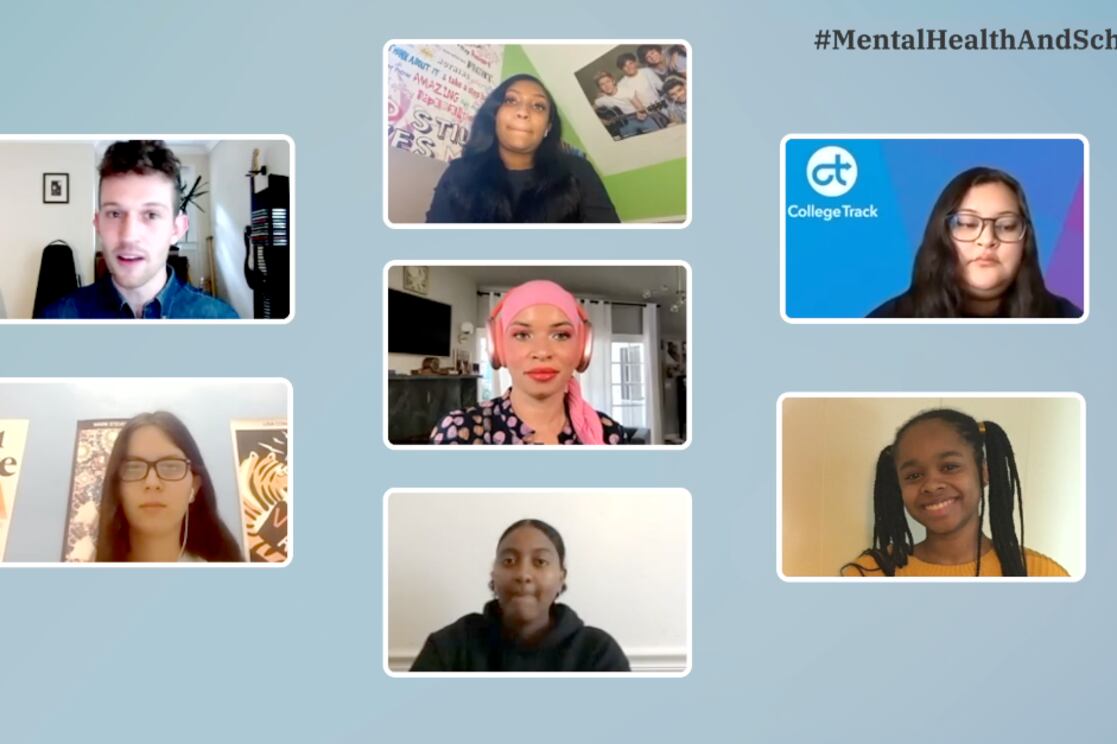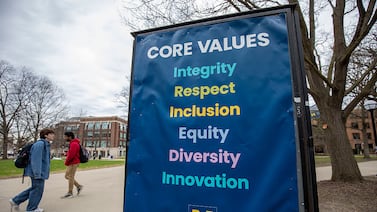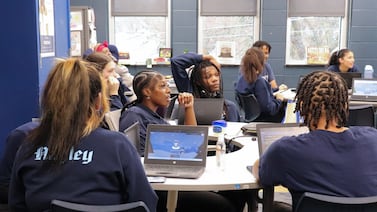When there was no distinguishing line between home and school while classes were virtual during the pandemic, Brittyn Benjamin-Kelley felt like her life was “going nowhere.”
“It was partially a self-discovery process because I had to figure out what I like to do on my own,” said Benjamin-Kelley, a senior at Cass Technical High School in Detroit. “But it was still a hard journey to have to go through by myself.”
Edi Wolde from Aurora, Colorado, described a similar feeling.
“It’s not fun being alone with your thoughts, especially if they’re negative,” she said.
They were among several students from across the U.S. who reflected on their experiences over the last two years during a discussion on mental health hosted Wednesday by Chalkbeat and College Track, a nonprofit focused on helping students reach and finish college.
Students shared familiar concerns, explaining that the COVID-19 pandemic has been a time of isolation, loss of structure, and added mental health burdens. But it was also a time of personal growth, some said — a testament to the resilience required of young people during the pandemic.
Xitlali Curincita, a student from the San Francisco Bay area, set “little goals” for herself, like participating in class once daily, and eventually started her own club that served as a space for students to talk. “I got the opportunity to actually make a statement and say that ‘I got your back,’” she said.
When students struggled, schools didn’t always have the resources to support them. Though schools across the country have added counselors, social workers, and training for teachers — thanks in part to federal COVID relief funding — many have faced staffing shortages and student needs that outstrip educators’ ability to effectively help.
The pandemic also followed years of alarming increases in rates of suicide and depression among young people. Suicide is the second leading cause of death among people ages 15-24, noted Mitch Prinstein, the chief science officer at the American Psychological Association, who participated in the event alongside other mental health experts.
“I’m not sure why it didn’t get more attention before. But I sure wish that it did,” Prinstein said. “Like so many things, the pandemic really exposed a problem that was there for a long time and made us see it all in a very different and more disturbing way.”
COVID also highlighted longstanding racial and age-based inequities in access to mental health services, said Jessica Jackson of the AAKOMA Project, a nonprofit focused on meeting the mental health needs of young people of color. And when families do realize they need help, they often encounter community mental health systems that aren’t flexible, accessible, affordable, or staffed to serve children in crisis.
“When I worked on impatient units, parents don’t know that you have to go to a children’s hospital most of the time” to get intensive services, she said. “If you go to your regular emergency room, everyone on the inpatient unit is like, what do we do with this 15 year old?”
Finding mental health support on an ongoing basis is a particularly acute challenge for families of color, she said. In addition to confronting higher rates of COVID, they’ve experienced the impact of racist violence in their communities.
“Not only am I experiencing the health issue, and grief, but now I’m also experiencing, I don’t know how people feel about who I am as I identify,” she explained. “And then you have to find a therapist that really can work with all of those things.”
It’s not that schools and outside groups don’t want to help, said Le’Yondo Dunn, principal of Mastery Simon Gratz High School in Philadelphia.
“What we are seeing when we want to jump in and get a young person access to support is that the system is incredibly overworked,” Dunn said. Dunn’s school has six social workers, more than most schools. Still, they feel strained.
“Our social workers are spending 80, 90% of their days responding and triaging,” he said. “What I wish our social workers had the capacity to do is to do some of the proactive work.”
Through a program called Rebound, his school provides additional therapy and violence mediation for a fraction of its students. Every student could use something like that, he said, “but it takes resources, and it also takes the right people.”
Students at the event — the final episode of a four-part Chalkbeat series — had their own suggestions for how schools could help.
Curincita said she would like to see schools host conversations about vulnerability, offering space to be vulnerable and to talk about what the concept means.
“Vulnerability, for me, is super hard to talk about,” she said. “But in most cases, I feel like there’s a need to be vulnerable to feel fully heard and understood.”
Another student wished people wouldn’t always try to solve their problems for them, but rather be a listening ear. Others suggested that schools add “mental health breaks” or time for rest. Lisbeth Martinez from Jordan Senior High in Los Angeles said she would like to see schools offer lessons on navigating conversations with adults about emotions, too.
Laura Clary of the Johns Hopkins Bloomberg School of Public Health shared research suggesting that those conversations can make a difference. Her study of a mental health program in Baltimore showed that students do actively apply the emotional management skills they learn.
“It’s heartening and depressing at the same time,” she said. “It’s heartening, because we can see that this could make a difference. But schools need the resources to be able to do these things.”
Watch the full conversation here.






